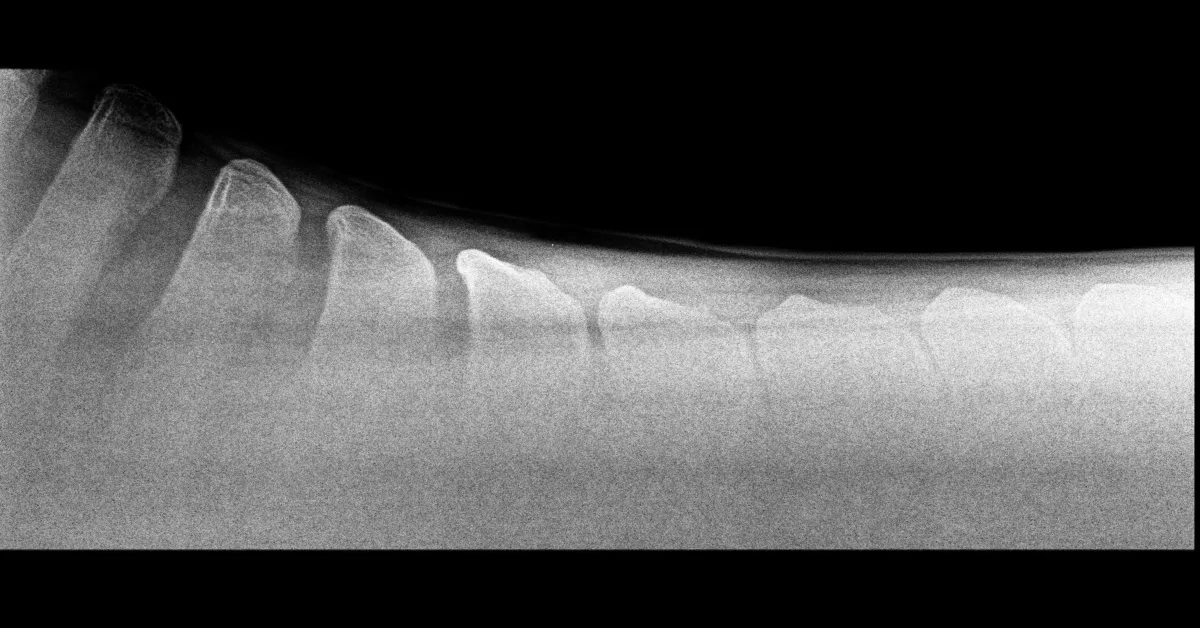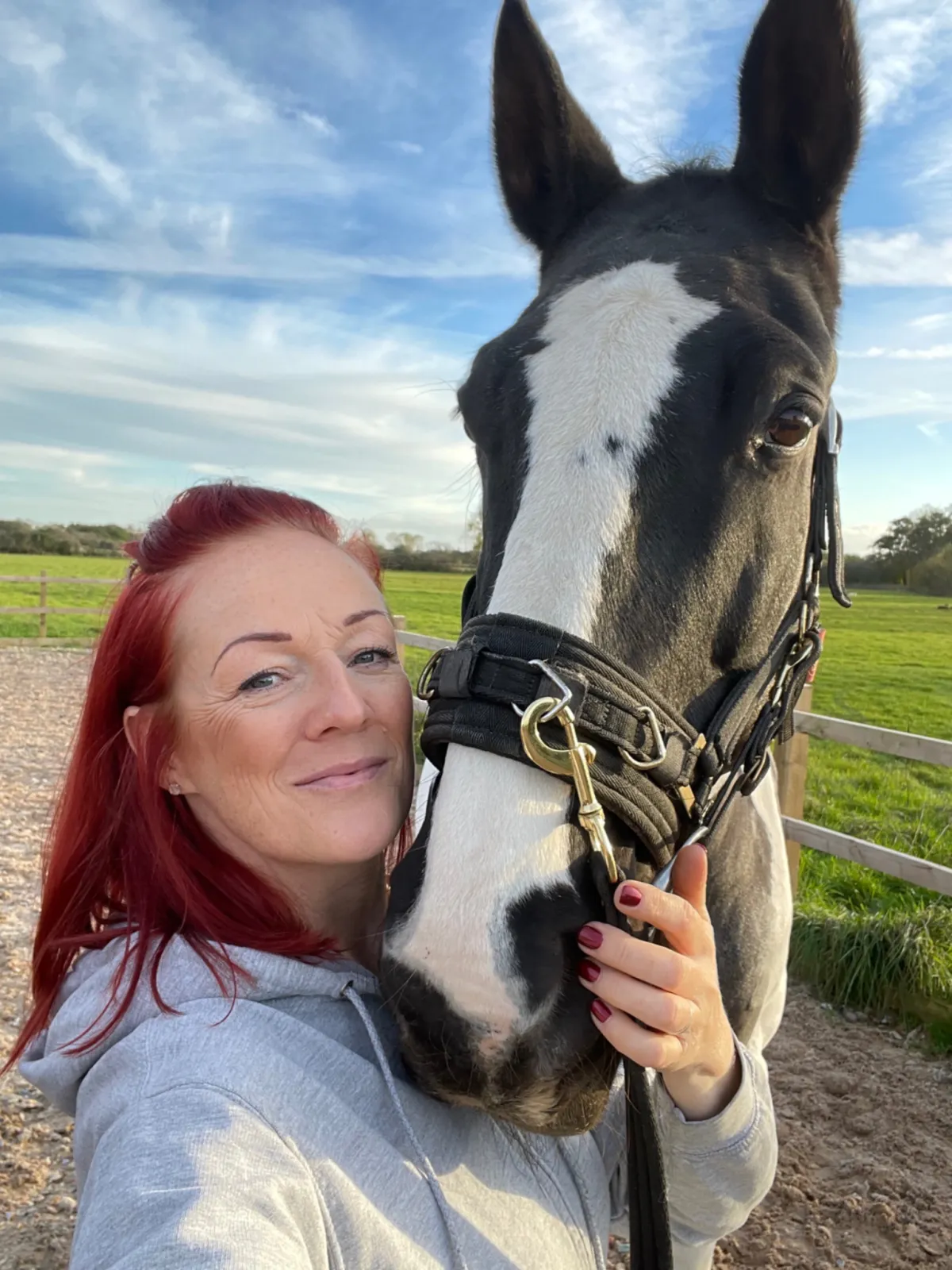
Once You Understand This, You'll Never Look at Kissing Spine the Same Way
Once You Understand This, You’ll Never Look at Kissing Spine the Same Way
Most people think kissing spine is just about bones touching.
But when you really understand what’s going on inside your horse’s back, it becomes clear:
👉 Every ridden horse needs targeted core strengthening.
Not just those in rehab.
Not just the ones with a diagnosis.
All of them.
Because once you understand how the deep stabilising muscles work (and what happens when they don’t), you’ll realise just how essential this kind of work is — for any horse that carries a rider.
What’s Really Happening in Kissing Spine?
Kissing spine — or Overriding Dorsal Spinous Processes (ORDSP) — occurs when the bony projections at the top of the vertebrae, called the dorsal spinous processes (DSPs), come too close together.
In more severe cases, these bones rub, compress, or even overlap, which can lead to:
🦴 Bone pain and inflammation
🦴 Bony changes such as remodelling
🦴 Ligament pain, particularly in the interspinous ligaments, which can become thickened, inflamed, or scarred due to ongoing compression
This is why some horses struggle with pain even when the X-rays don’t look that dramatic — because ligament strain and soft tissue discomfort can be just as significant as bony contact.
But here's the most important part:
These bones don’t move on their own.
The Role of the Multifidus: The Hidden Hero of the Spine
The multifidus muscles are a series of small, deep postural muscles that run along the spine. They connect individual vertebrae, and their job is to:
✅ Stabilise the spine through movement
✅ Create and maintain space between the DSPs
✅ Control small but critical postural adjustments
✅ Absorb movement forces and reduce strain on bones and ligaments
When the multifidus muscles are healthy and active, they help keep the vertebrae in correct alignment and prevent the bones from compressing.
But these muscles are prone to atrophy, especially when a horse is in pain, not moving well, or not being worked in a way that activates them.
Once the multifidus starts to waste away, the spine becomes less stable, and the DSPs can more easily come into contact — leading to a painful cycle of weakness and dysfunction.
The Solution: Specific Core Work That Rebuilds Stability
You can’t fix this with just riding.
And you definitely can’t fix it with rest alone.
💡 Your horse needs targeted, therapeutic core strengthening — the kind of work that’s more like Pilates for horses than traditional exercise.
This includes:
🔸 In-hand and groundwork exercises that stimulate spinal stability
🔸 Movements that activate the multifidus and core without force
🔸 Work that starts before ridden rehab begins
🔸 Focused, mindful repetition that builds strength slowly over time
And here's the game-changer:
📚 A published scientific study has shown that when these specific core exercises are done 5 times per week for 12 weeks, the multifidus muscles actually increased in size.
That means this work doesn’t just look good — it creates measurable, anatomical improvement in the exact muscle group responsible for spinal stability.
These are the same kinds of exercises I teach in my Core Exercises for Your Horse course, and they’re a foundation of the rehab programmes I use with kissing spine horses in my physio practice.
Because they work.
Because they’re backed by science.
Because they support the exact part of the horse’s body that needs help the most.
Prevention Is Easier Than Rehab
If your horse is in rehab from kissing spine, this work is essential.
But even if they aren’t showing signs yet — this kind of strengthening should be part of your routine now.
It’s far easier to build strength and stability before a problem arises than to undo pain, inflammation, or compensatory movement patterns later.
Every ridden horse is at risk of spinal weakness if not conditioned properly.
And most horses aren’t naturally strong enough to carry us without help.
If you're committed to your horse's long-term soundness, this is work that simply can’t be skipped.
Ready to Start?
If you want to protect your horse’s back and understand what they really need to stay sound and strong:
👉 Explore the Core Exercises Course
👉 Download the Kissing Spine eBook Bundle for practical guidance, posture awareness, and rehab strategies
Once you understand what’s really happening inside the spine — and what your horse’s body truly needs — you’ll never settle for guesswork again.
Your horse only has one back.
Let’s support it properly.

